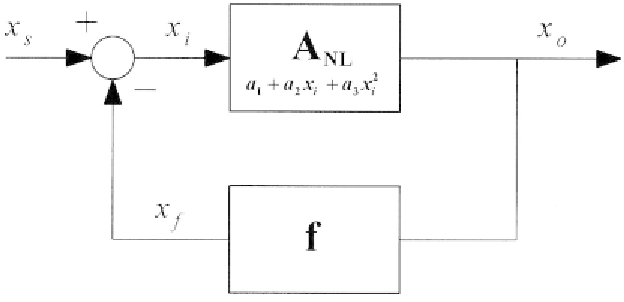Environmental Engineering Reference
In-Depth Information
7.1 HARMONIC DISTORTION AT LOW FREQUENCY
In this section we shall analyse the influence of feedback on harmonic
distortion for low-frequency input signals. In other words, we consider the
input signal frequency lower than the cut-off frequency of the loop gain,
which can be therefore assumed constant, i.e.
7.1.1 Nonlinear Amplifier with Linear Feedback
The classical theory of feedback amplifiers asserts that negative feedback
reduces harmonic distortion by the loop-gain [GM93], [LS94]. Let us
consider the same amplifier in Fig. 7.1 characterised by the same nonlinear
function given in (7.1), and feed a fraction
f
of the output signal back to the
input, as shown in Fig. 7.2. This means to close the amplifier in loop with a
linear feedback,
f
, and obtaining a return ratio equal to It is well
known that the harmonic distortion terms given by (7.7a) and (7.7b) are
reduced by the factors
and
, respectively. Alternatively, we
obtain a reduction by a factor
on the harmonic distortion factors
referred to the output signal magnitude.
Following the approach described in [PM91], a more accurate result of
the harmonic distortion factors of a closed-loop amplifier can be obtained.
Indeed, for the feedback amplifier in Fig. 7.2 we have








